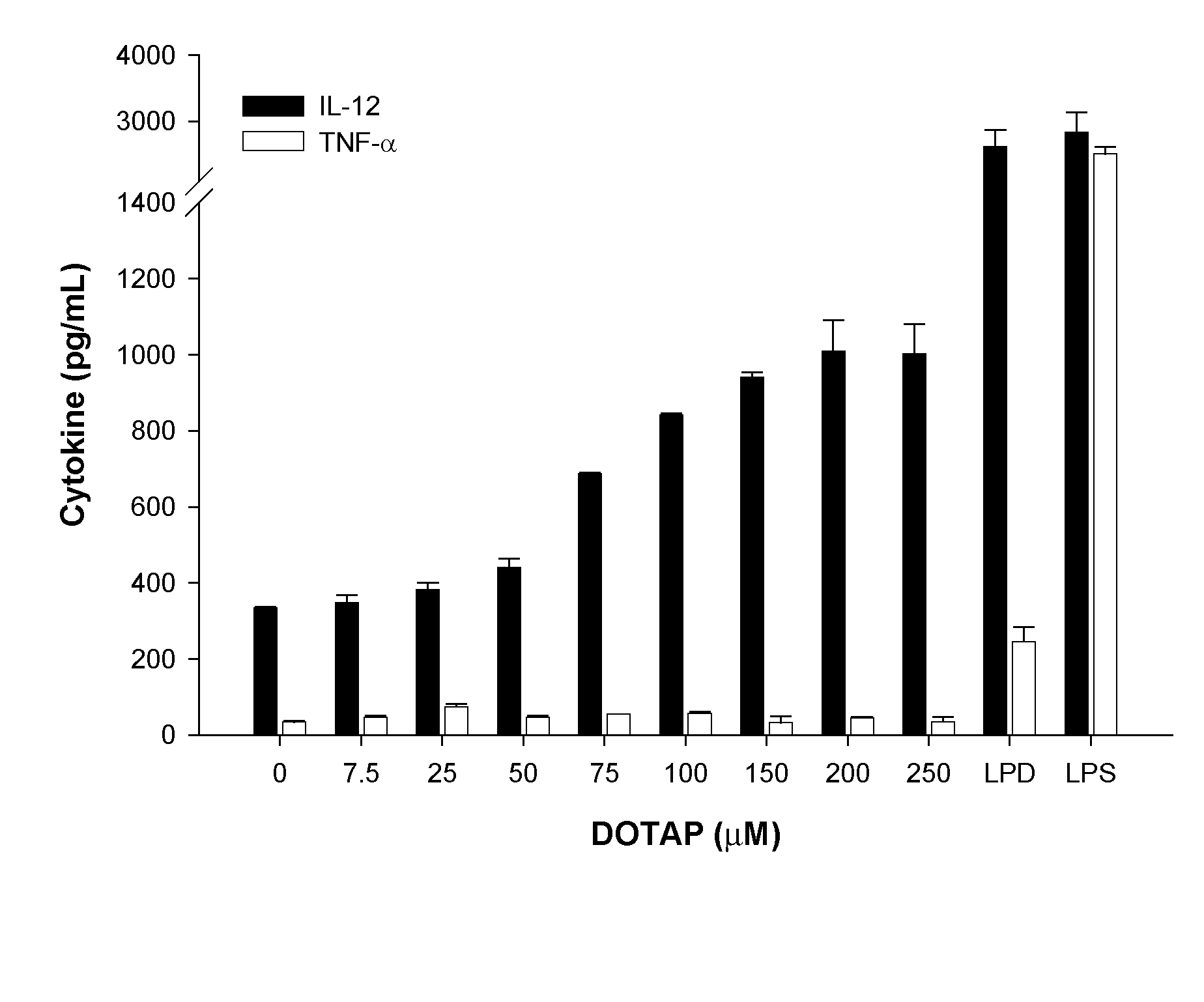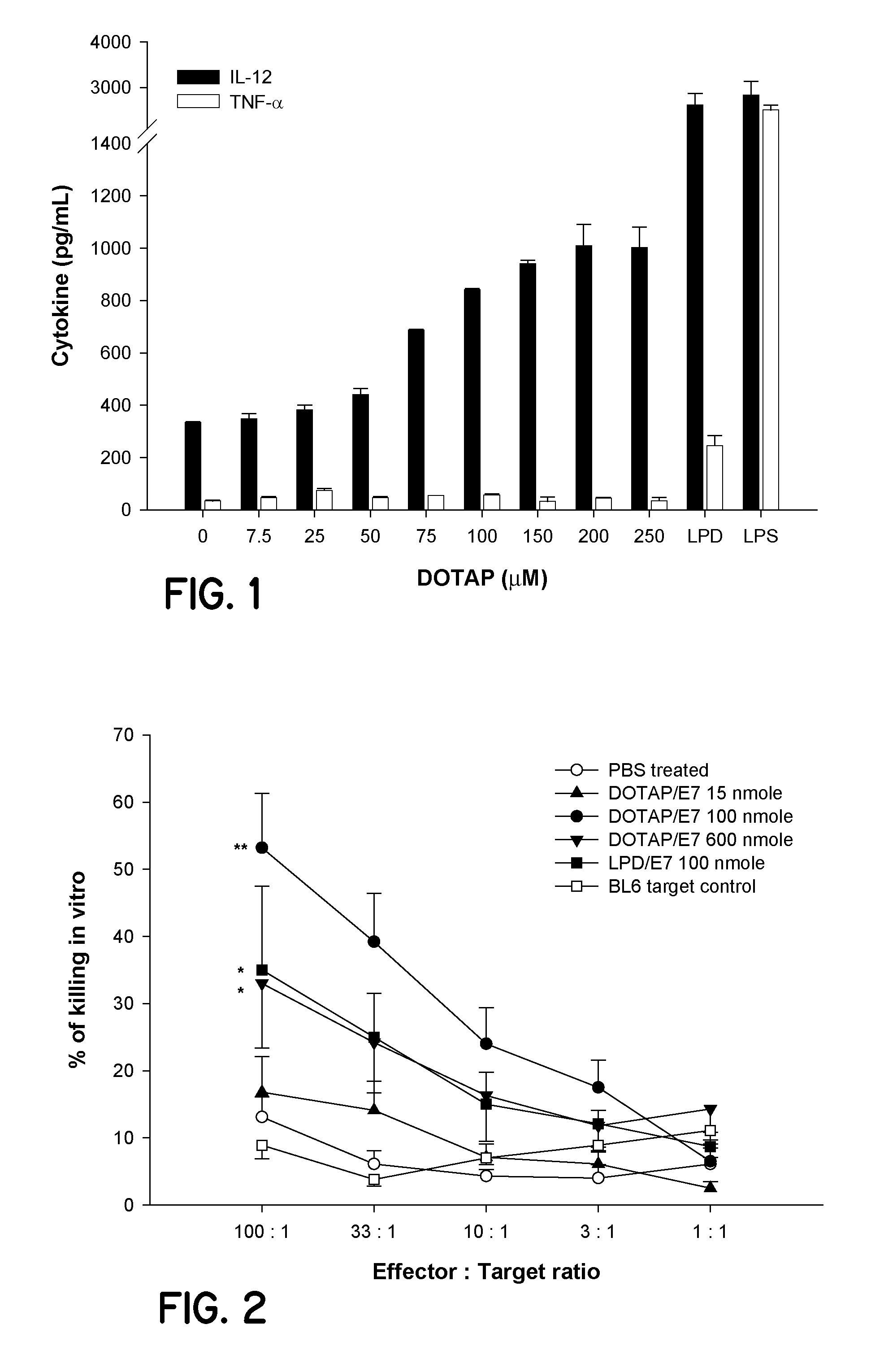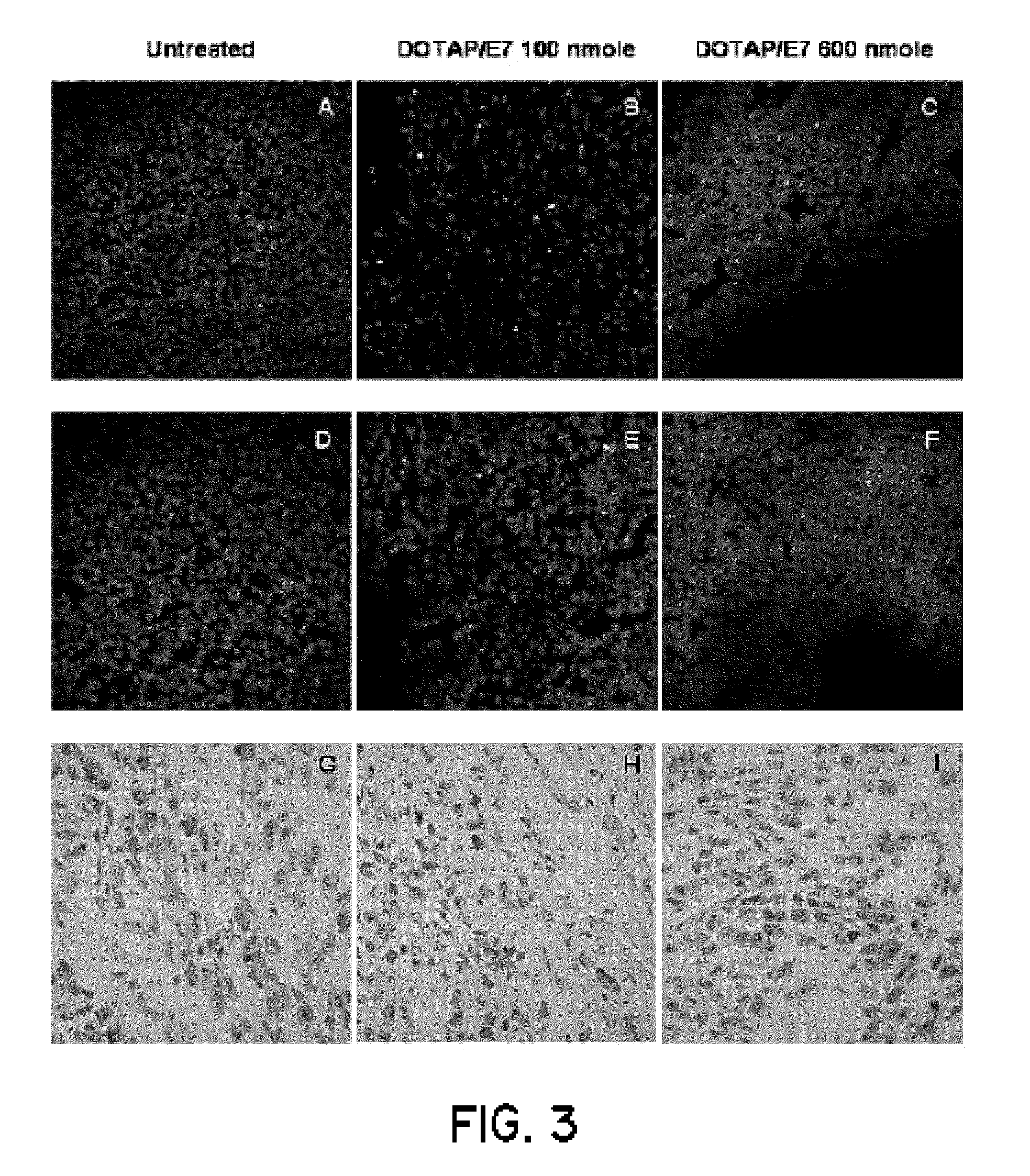Stimulation of an immune response by cationic lipids
a lipid and lipid technology, applied in the field of stimulating an immune response, can solve problems such as and achieve the effect of preventing the observed immune respons
- Summary
- Abstract
- Description
- Claims
- Application Information
AI Technical Summary
Benefits of technology
Problems solved by technology
Method used
Image
Examples
example 1
Effective Stimulation of the Immune System and Antigen-Delivery to the Antigen Presenting Cells by Specific Dose Compositions of Cationic Lipids Leads to a Potent Immune Response in the Prevention and Treatment of Disease
[0097]1. Preparation of liposomes for use as an immune system stimulant including cationic lipid (for example, DOTAP) alone, or cationic liposomes incorporating an antigen (for example, HPV protein E7 peptide antigen).
[0098]Cell culture grade water (commercially available from Cambrex of Walkersville, Md.) or phosphate buffered saline was used in all liposome preparation procedures. The E7 antigen was the H-2Db restricted CTL epitope (amino acid 49-57, RAHYNIVTF [SEQ. ID. NO. 1]) derived from HPV 16 E7 protein (synthesized by the University of Pittsburgh, Molecular Medicine Institute, Pittsburgh, Pa.).
[0099]Liposomes used these studies were made using lipid films. Lipid films were made in glass vials by (1) dissolving the lipids in chloroform, and (2) evaporating th...
example 2
Mechanism Of the Immunostimulatory Activity of Cationic Lipids: Phosphorylation of a Map Kinase, ERK and Induction of Chemokines
[0151]A. Materials and Methods
[0152]1. Cell Lines and Peptides
[0153]TC-1 cells were provided by TC Wu (Johns Hopkins University, Baltimore, Md.). These cells are C57BL / 6 mouse lung endothelial cells that have been transformed with the HPV16 E6 and E7 oncogenes and activated H-ras. Cells were grown in RPMI medium (commercially available from Invitrogen of Carlsbad, Calif.) supplemented with 10% fetal bovine serum and 100 U / ml penicillin, and 100 mg / ml streptomycin. The MHC class I restricted peptide from the HPV 16 E7 protein (amino acid 49 to 57, RAHYNIVTF [SEQ. ID. NO. 1]) was synthesized by the University of Pittsburgh Peptide Synthesis Facility by solid state synthesis using an Advanced ChemTech model 200 peptide synthesizer and purified by HPLC. [as described in Feltkamp, et al. Eur J Immunol 23, 2242-2249 (1993)]. Mouse monoclonal antibodies specific t...
example 3
Demonstration of the Immunostimulatory Capability of Cationic Lipid / Antigen Complexes in Cells of the Human Immune System
[0190]1. Cationic lipid / E7 complexes activate human dendritic cells in a lipid dose dependent manner
[0191]Cationic liposomes were prepared as described above. The E7 antigen used in the formulation is the identified human E7 peptide restricted by HLA-A*0201 (HPV-16 E7, amino acids 11-20, YMLDLQPETT (SEQ. ID. NO. 2). The peptide was synthesized by the University of Pittsburgh, Molecular Medicine Institute, Pittsburgh, Pa. Human HLA-A2 human dendritic cells were obtained from Lonza (of Walkersville, Md.). Frozen cryovials were thawed and the dendritic cells were cultured in LGM-3 medium (commercially available from Lonza of Walkersville, Md.) supplemented with 50 microgram / ml IL-4 and GM-CSF at 37° C. and 5% CO2 at an initial plating density of 125,000 cells / cm2 in 2 ml of medium in 12-well tissue culture dishes. The cells were grown for 3 days in culture and appear...
PUM
 Login to View More
Login to View More Abstract
Description
Claims
Application Information
 Login to View More
Login to View More - R&D
- Intellectual Property
- Life Sciences
- Materials
- Tech Scout
- Unparalleled Data Quality
- Higher Quality Content
- 60% Fewer Hallucinations
Browse by: Latest US Patents, China's latest patents, Technical Efficacy Thesaurus, Application Domain, Technology Topic, Popular Technical Reports.
© 2025 PatSnap. All rights reserved.Legal|Privacy policy|Modern Slavery Act Transparency Statement|Sitemap|About US| Contact US: help@patsnap.com



